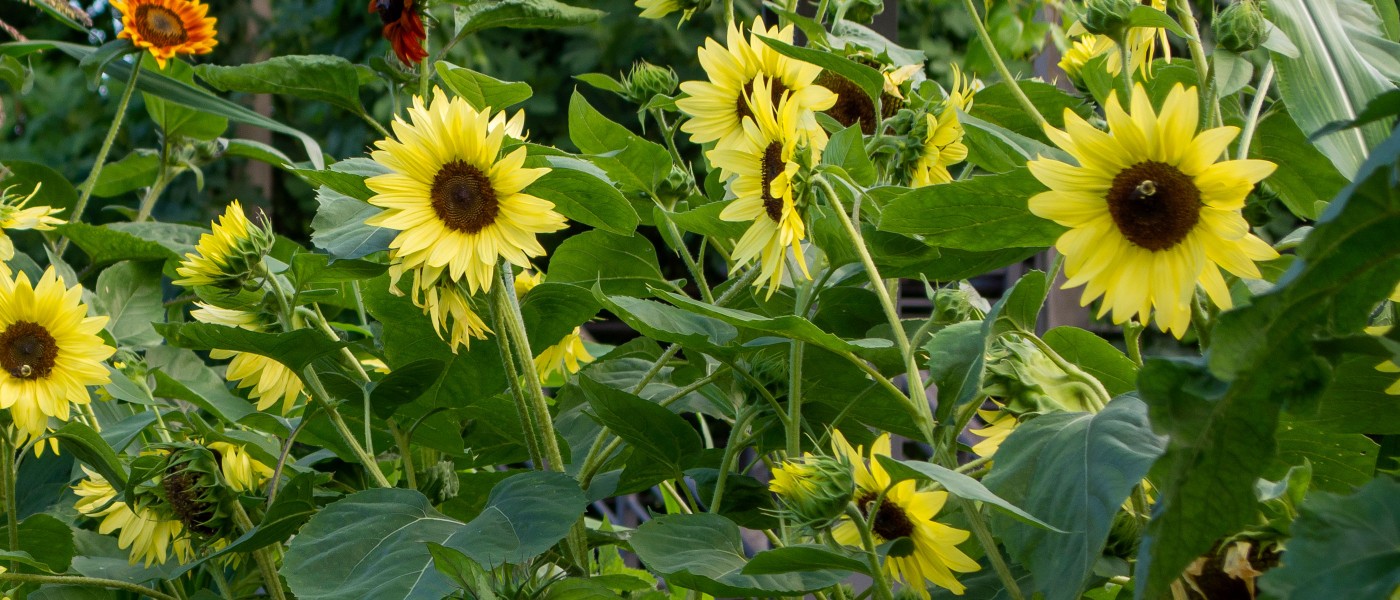How to Collect Sunflower Seeds
As the leaves change color and the flowers begin to fade this fall, you might be gathering your last summer tomatoes or zucchinis, or starting to think about collecting seeds. Gardeners save seeds from all kinds of plants, but sunflower seeds are especially easy (and fun) to gather, whether you’re planning next year’s crop or eyeing a tasty homemade snack.
First, some background. Common sunflowers (Helianthus annuus) are an annual member of the genus Helianthus. All sunflowers are native to the Americas, and most are actually perennial plants, returning from the same roots year after year. Common sunflowers and sunchokes (Helianthus tuberosus, grown for their edible underground tubers) are the only two sunflowers commonly grown by humans for food, though the seeds of all species are a favorite fall food of wildlife, especially birds and small mammals.
Numerous varieties of the common sunflower have been developed, from those with a single large flower (some over a foot across!) to others with multiple smaller flowers, with colors ranging from pale yellow to deep maroon.
As members of the aster family, what we perceive as their flowers are actually composed of many smaller individual flowers (“florets”). Each seed is actually a fruit (technically known as an “achene”) of one of those florets—the true seed is the part inside the shell.
How to Collect Sunflower Seeds
Because common sunflowers are annuals, surviving only one growing season, we have to save their seeds in order to grow the varieties we like from year to year. You might also just want to roast, salt, and eat them, or share them with friends and family.
- Cut your seedheads. In late summer and early fall, as the sunflowers’ petals are fading, you can cut your sunflower stems below the seedhead and bring the seedheads inside to finish drying. The birds might give you another clue that the seeds are ready to be harvested—they’ll start eating them if you wait too long!
- Get set up. To collect the seeds, set yourself up at a table. (The seeds can scatter a bit.) Begin by removing any dry petals or other non-seed material to cut down on the amount of debris in your harvested seeds.
- Coax out your seeds. After a couple of days of drying indoors, some seeds should begin to fall out on their own, but the rest can easily be coaxed out by hand—wiggle them back and forth until they come free. The rest will follow more easily, until they’ve all come out of the seedhead.
- Dry and store your seeds. Leave the seeds spread out on a tray for another day or two to finish drying. Damp seeds can easily grow mold in storage—bad news for both growing and eating purposes. When they’re dry, store them in a paper bag or envelope or in an airtight container.
If you’re saving your sunflower seeds for growing in the spring, you can store them in a dry, room-temperature spot. If you’re storing them longer term, or for eating, keeping them in the fridge (in an airtight container) or another cool place will help preserve their freshness and keep them viable for a longer period of time.
Under ideal conditions, the seeds should stay viable for five or more years. And if you’re more interested in eating your sunflower seeds (who could blame you? Maybe those birds were on to something), you can also dispense with all of this and just roast them straight from the flower.


